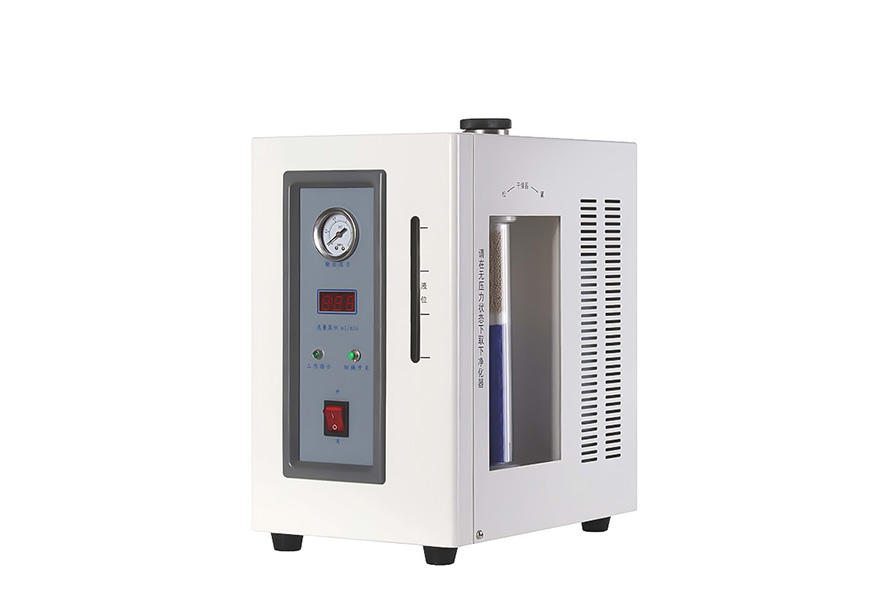
Shanghai Yetuo Nitrogen Generator is a device used for separating and producing high-purity nitrogen from air. Its working principle is mainly based on the following technologies: pressure swing adsorption (PSA), membrane separation, and cryogenic separation. The commonly and widely used technology is pressure swing adsorption (PSA). The following is an introduction to the working principle and different technologies of a nitrogen generator:
1. Pressure Swing Adsorption (PSA) technology
working principle:
Pressure swing adsorption (PSA) technology is based on the differences in adsorption characteristics of different gas molecules in the air on adsorbents, and separates nitrogen and oxygen by changing pressure conditions. The main process includes the following steps:
Air compression: Air is compressed to a higher pressure (usually 7-10 bar) through an air compressor.
Preprocessing: Compressed air is filtered and dried to remove moisture, oil mist, and impurities, ensuring the purity of the air entering the adsorption tower.
Adsorption: The dried air enters the adsorption tower, which is filled with carbon molecular sieves (CMS). Under high pressure conditions, carbon molecular sieves preferentially adsorb oxygen, water vapor, and carbon dioxide from the air, while nitrogen is separated through an adsorption bed.
Desorption: When the adsorption capacity of the adsorption tower reaches saturation, the system switches to a low-pressure state, releasing adsorbed oxygen and other impurities. Alternating cycle: Nitrogen generators are usually equipped with two or more tower systems, which work alternately, with one tower adsorbing and the other tower working separately to continuously and stably produce nitrogen gas.
advantage:
Energy saving: No need for high temperature and high pressure conditions.
Easy to operate: high degree of automation and convenient operation.
Low maintenance cost: The main components have a long lifespan and are easy to maintain.
2. Membrane separation technology
working principle:
Membrane separation technology utilizes the difference in diffusion rates of different gas molecules in membrane materials to achieve gas separation. The specific process is as follows:
Air compression and pretreatment: Similar to PSA technology, air is compressed and dried to remove impurities.
Membrane separation: The pre treated air passes through the membrane separation module. Membrane materials have a higher permeation rate for oxygen, carbon dioxide, and water vapor, while the permeation rate for nitrogen is lower. Through selective membrane permeation, oxygen and other impurities are removed, resulting in high-purity nitrogen gas.
advantage:
Simple and compact equipment: small footprint.
Easy to operate: quick start and stop.
Suitable for small-scale and medium-sized nitrogen demand.
3. Cryogenic separation technology
working principle:
Cryogenic separation technology is based on the boiling point differences of various components in air under low temperature conditions, through low-temperature liquefaction and gas separation. The specific process is as follows:
Air compression and pretreatment: Similar to the previous two techniques, air is compressed and dried.
Cryogenic separation: Compressed air is gradually cooled to a low temperature (below -180 ℃) in a multi-stage expansion machine and liquefied into liquid air. Then, oxygen, nitrogen, and other inert gases are separated through a distillation tower.
advantage:
High purity: capable of producing high-purity nitrogen gas (above 99.999%).
Suitable for large-scale industrial production: capable of meeting large-scale nitrogen demand.
The nitrogen generator adopts different separation technologies and selects the appropriate technical solution according to application requirements and scenarios. Among them, pressure swing adsorption (PSA) technology has the advantages of energy saving, simple operation, and low maintenance costs. Membrane separation technology is suitable for small-scale and medium-sized nitrogen demand, while cryogenic separation technology is suitable for situations that require high-purity nitrogen and large-scale industrial production.
By understanding these working principles and technological differences, it is easy to choose and use nitrogen generators to meet specific application requirements.


